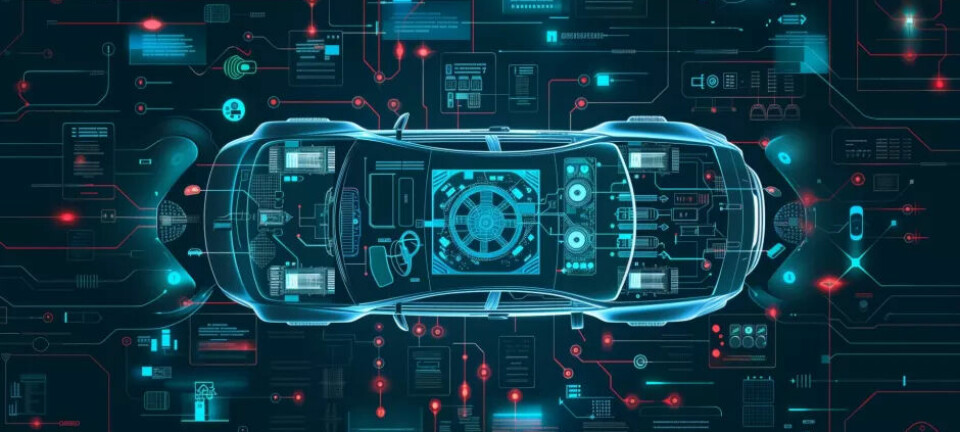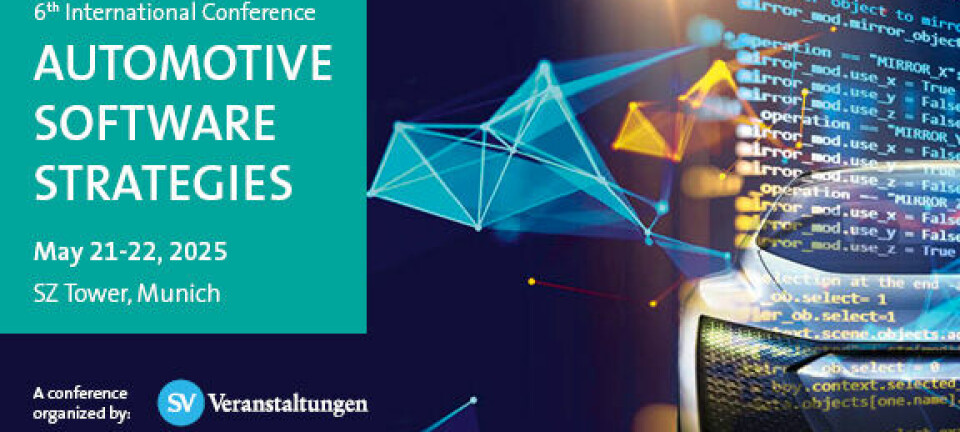Interview with Joachim Langenwalter, Founder and CEO, TMT CoPilots
“Many SDV programmes fail due to old structures”
Outdated organisational structures, lack of data competence, and insufficient development speed and customer orientation compared to China: In the interview, Joachim Langenwalter, founder and CEO of TMT CoPilots, analyses why many SDV programmes fail - and what European manufacturers must radically change now.
Ultima Media Germany / TMT CoPilots
High-tech alone is not enough. The transition to a software-defined vehicle exposes decades-old misconceptions. Joachim Langenwalter reveals why European manufacturers are operating blindly - and what China has long been doing better, with painful insights.
Joachim Langenwalter has seen a lot in the automotive industry - up to the software-defined vehicle platform. As an industry expert, he has not only witnessed numerous technological transformations but has also actively shaped them. For example, he was responsible for automotive software at Nvidia, led global software and hardware development at Stellantis, and previously managed the automotive business at Mentor Graphics. Today, he is a member of the advisory board of the "Automotive Software Strategies" conference and founder of TMT CoPilots, where he advises manufacturers and suppliers on realignment in the software and AI era. In the interview, he analyses why many SDV programmes fail, how China has changed the rules of the game, and what mistakes European companies must avoid.
Mr Langenwalter, when it comes to software-defined vehicles, you speak not only of a technological change but of a fundamental system change. What does that mean specifically?
The transition to the software-defined vehicle (SDV) is not purely a technological issue. It is not enough to develop a new EE architecture or introduce an agile method. I see four equally important dimensions that need to be transformed in the automotive industry: culture, business models, customer relationships, and yes, technology too. And all of this simultaneously. Many believe they can "install" SDV into existing silo organisations, but that doesn't work. I like to call it Game of Thrones: If you put the same people in the same hierarchies with the same networks and then expect a different result, it doesn't work.
A vivid example is the idea of the speedboat: You want to build an agile, fast organisation - but put the old crew in it. The boat sinks before it leaves the harbour. Many organisations are trapped in structures that have developed over decades, where political interests and the size of the organisation dominate, and technological capabilities are secondary.
What most underestimate at this point: There are hardly any technical career paths in Europe, as are standard in tech companies. Instead, management careers dominate - with an overweight of project, product, supplier, process, and integration managers. But it is precisely there that technical capabilities are often lacking. In the technical career ladder, an SW, AI, or domain expert must be paid the same as a VP or SVP in the management career. As long as these structural problems persist, talents will migrate - to Apple, Google, or startups.
Another example is the personnel structure of many so-called software units. I have seen cases - for example, in the software division of a large German OEM, where only about ten percent of the employees actually programmed. The rest were the aforementioned management functions. In a functioning SDV organisation, it should be exactly the opposite: At least 70 percent of the people should write code themselves - otherwise, the ability to implement is lacking.
What do Asian manufacturers do differently or better from your perspective?
Asian manufacturers - especially in China - think about the vehicle concept in a radically different way. It's no longer about a car in the traditional sense, but about a connected ecosystem. Take Xiaomi as an example: The vehicle is not just a means of transport, but part of a comprehensive digital everyday life. Smart Home, Smartphone, Smart Mobility, Smart Office - everything is seamlessly integrated. If I have a smart device from Xiaomi like a camera at home, I can see it in the car. If someone rings the doorbell, I can interact with the delivery person from the vehicle - for example, open the door or speak to them. The car becomes the control centre of my life.
In Europe, on the other hand, there is still too much function- and component-centred thinking. There are silos - infotainment, ADAS, powertrain - all of which are optimised individually. What is happening in China is a user-centric optimisation at the system level - or as I call it: a customer-defined vehicle instead of a purely software-defined vehicle.
There is also a cultural factor: After feeling dependent on Western brands for decades, Chinese customers today consciously choose local providers. And they deliver - technologically and functionally - convincing products, often faster and cheaper. This system thinking only works because they access consolidated data spaces - and develop real, user-centric functions from them. In Europe, on the other hand, there is often still data chaos and silo thinking.
In your analysis, data plays a key role - why are they so crucial for the success of SDV?
Data is the key to everything relevant in SDV - whether it's AI, personalisation, feature enhancement, or efficiency. But data alone is not enough. It's about how I use it, how I process it, and what capabilities I build for it. I need a combination of intelligent data collection, data factory, and technical skills that can record, curate, analyse, process, and transfer relevant data into development and customer functions. Most OEMs don't even know what they should store - leading to absurd tenders for exabytes of data, i.e., billions of gigabytes, because no one filters.
Suppliers are particularly disadvantaged: they almost always lack the data because OEMs do not share it. How is a supplier supposed to develop a data-based system if they don't even know how it is used? At the same time, many companies lack the internal structures to even handle data-driven processes. And we're not even talking about AI. Those who do not work data-based are flying blind.
What does the changing role of data mean for the collaboration between OEMs and suppliers?
The classic logic - specification, awarding, development, delivery, SOP (Editor's note: Start of Production), project end - no longer works in the SDV era. I have to work continuously with my partners. I need access to data, updates, feedback. A software feature doesn't end with the start of production - it only begins there. If I then change the supplier every four years, it's catastrophic. OEMs often try to keep their partners at arm's length - but with this attitude, you eventually hit a wall. And sometimes you have to get a bloody nose before you reach out.
We need long-term, trusting partnerships. The basis for this is openness: source code sharing, joint development platforms, and white-box models. Open source is not a risk, but an opportunity. If many use the same basic system, everyone can focus on what makes the difference. And that increases the speed of innovation. Those who close themselves off will no longer play a role in the medium term.
What works in practice? Are there positive examples?
I see success where companies have the courage to build a new organisation - and truly make it independent. That means: tech culture, clear customer goals, new team. The existing organisation must not block this. People often talk about the 'double S-curve': one organisation phases out while a new one is built. In doing so, employees are deliberately brought from the old world into the new one - but only if they fit the mindset. And success is not measured by political power plays, but by capabilities that create customer value.
Unfortunately, the opposite is often the case: a new unit is founded - but filled with old processes, old decision-makers, old policies. Then you only have a new name, but no change. It's alarming how many companies don't recognise this. As I said, they build a software unit, but 90% of the people don't write code. That can't work.
About Joachim Langenwalter
Joachim Langenwalter studied aerospace engineering in Munich and then worked for over 20 years in Electronic Design Automation at Synopsys, Mentor Graphics, and Mathworks. He was responsible, among other things, for the development and deployment of EE architectures, ECUs, SoCs, operating systems, and complete software applications for the automotive industry.
From 2015, he led the entire automotive software development for cockpit and autonomous driving at Nvidia. He then moved to Stellantis, where he built the new software and hardware organisation for 14 vehicle brands worldwide - including partnerships with Qualcomm, Amazon, Foxconn, and Vector. Most recently, he was SVP at Autobrains and is currently a member of the software advisory board at Mercedes-Benz, dSPACE, and various industry committees. Today, he is the founder and CEO of TMT CoPilots and an executive advisor for technological, cultural, business model-related, and customer-oriented transformations.
His key topics: Software and hardware (EE architecture, chip design), AI, data-driven development, autonomous driving, cockpit, connectivity, cloud services - and the organisational strategic implementation of all this. Joachim Langenwalter is also on the advisory board of the conference "Automotive Software Strategies".
Why is it worth visiting the Automotive Software Strategies?
Because the event has a very dynamic team that is open to disruptive solutions - and no longer just relies on evolutionary approaches. Particularly exciting is the World Café format, which is about real, interactive discussions. Topics discussed there include 'Dealing with Uncertainties' - which includes geopolitical developments such as the trade war between the USA and China, new alliances between car manufacturers and suppliers, as well as technological challenges around AI and data.
The conference brings decision-makers, strategists, and developers physically to the table. It's not about frontal presentations, but about exchange on equal terms: customer-centric, practical, and with a view of the entire value chain - from the idea to implementation. Those who want to understand how to act successfully under uncertain conditions will find answers and inspiration here.
And are you optimistic that the change will succeed?
I am a realist. Change is possible - but not guaranteed. There are companies that are serious, that are brave, and that actively shape the change. And there are others that prefer to defend their status and structures rather than invest in the future. The pressure is increasing - from China, from new competitors, from customer demands. That's good. But transformation is not a given.
Those who take SDV seriously must do more than introduce new tools. It requires a mental, structural, and cultural overhaul. Those who achieve this can redefine the car - and win in the process.
This article was first published at all-electronics.de


































